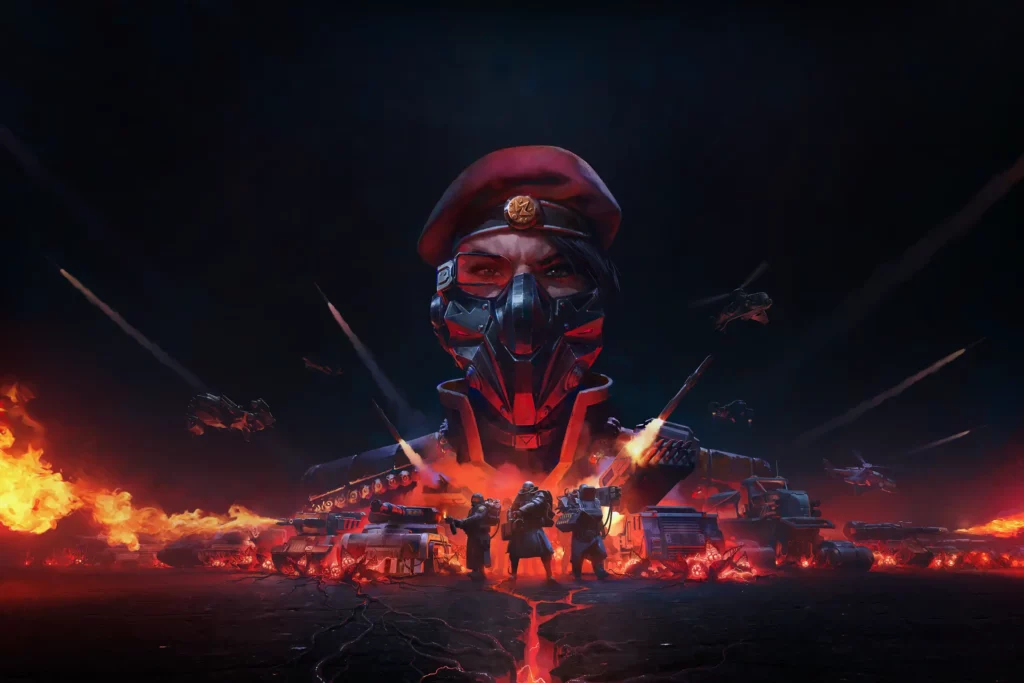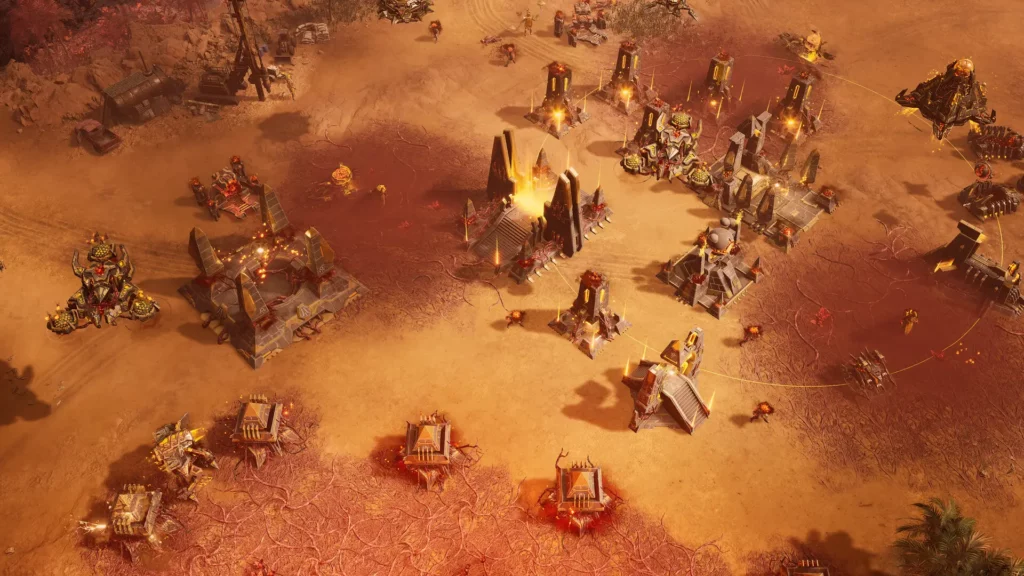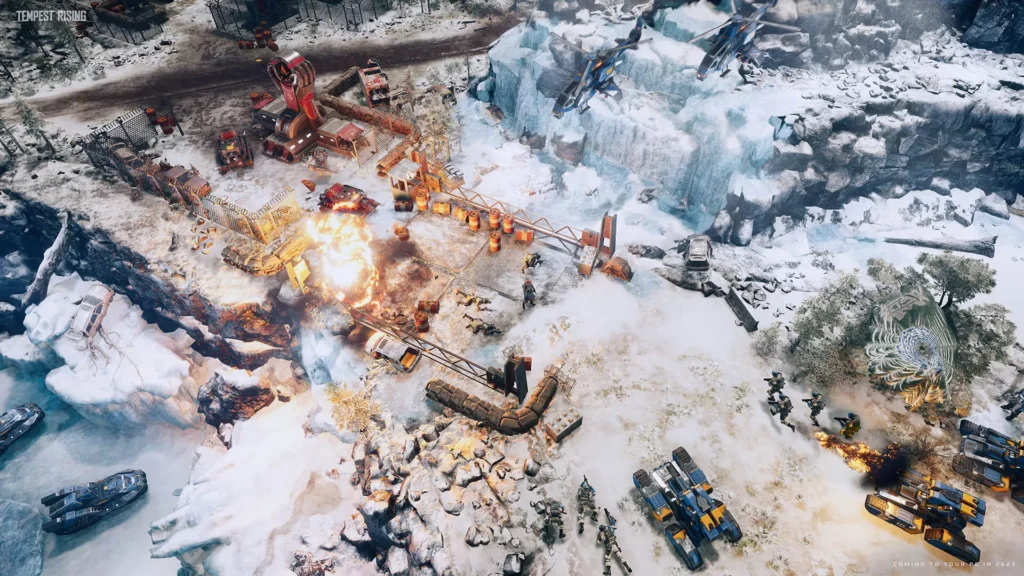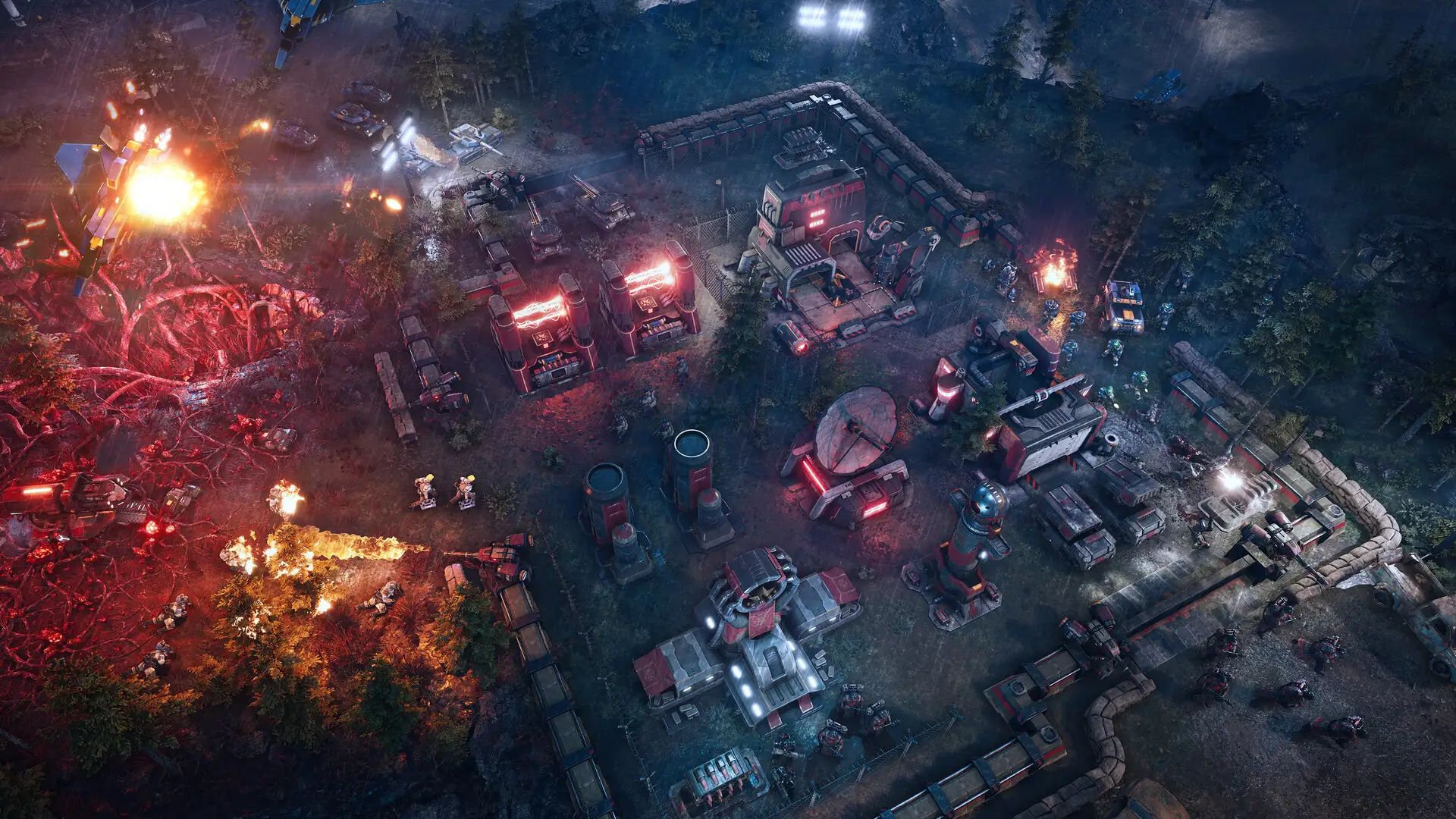Tempest Rising unapologetically channels the spirit of the golden age of real-time strategy, evoking the legacy of 90s-era genre-defining titles with striking confidence. It doesn’t merely reference the classics—it builds upon them with care, delivering a modernized take that respects its roots while injecting its own flair. Everything from its pulse-pounding soundtrack to its narrative interludes radiates a reverence for the RTS greats of yesteryear.

The Essentials
- Game Type: A faithful RTS homage with modern polish and nuanced mechanics
- Launch Date: April 24, 2025
- Price: $40 / £35
- Developer: Slipgate Ironworks
- Publisher: 3D Realms, Knights Peak
- Tested On: AMD Ryzen 5 3600, Nvidia 2080 Super, 32 GB RAM
- Steam Deck Support: Pending
More Than Nostalgia
Tempest Rising may draw clear inspiration from Command & Conquer, but it avoids becoming a mere clone. Instead, it takes the core of what made those games memorable—tight pacing, visually impactful battles, and deeply asymmetrical factions—and refines them for a contemporary audience. Its campaign design, unit mechanics, and pacing showcase thoughtful development, making the game more than a nostalgia trip—it’s a potential modern classic in its own right.
Post-War Energy Conflict
Set in a post-World War III Earth of 1997, the game’s world is gripped by the emergence of Tempest, a vibrant yet hazardous growth that doubles as a vital energy source. The race to control this volatile resource has ignited a new war between two opposing powers: the disciplined Global Defence Force (GDF) and the zealously aggressive Tempest Dynasty.
Familiar Yet Distinct Gameplay
Players accustomed to traditional RTS gameplay will find familiar rhythms: base building, resource harvesting, unit recruitment, and large-scale confrontations. Yet, each faction introduces unique mechanics that dramatically alter how these fundamentals unfold.
Divergent Faction Design
While the GDF and the Tempest Dynasty may echo familiar archetypes, the execution of their mechanics is distinctly innovative. For instance, the GDF deploys building blueprints that gradually assemble over time, while the Dynasty opts for instantaneous structure placement from a build queue. This not only changes tactical decisions but alters moment-to-moment strategy during battles.
Strategic Contrast in Combat
Combat style diverges significantly between the two factions. The GDF emphasizes tech superiority, utilizing support drones, vehicle-marking scouts, and hovercraft with air dominance and healing capabilities. Meanwhile, the Tempest Dynasty prefers overwhelming force, featuring flamethrower troops, missile-launching vehicles, and bizarre rolling war machines capable of crushing smaller units outright.


Units Packed With Abilities
Tempest Rising offers a wide array of units with specialized active abilities and synergistic potential. For example, the GDF sniper can cloak to approach targets unseen and designate them for devastating airstrikes, while the Dynasty counters with detection specialists. The strategic layers run deep, rewarding tactical awareness and experimentation.
Securing the Map
Both factions have tools to assert territorial dominance. The GDF can deploy beacons that allow rapid construction within their radius, while the Dynasty utilizes salvage vans as portable outposts that both build and repair. These tools transform battles into dynamic multi-front engagements, where positioning and map control matter as much as brute strength.
Campaigns That Challenge and Teach
The campaign missions act as both tutorials and tests of strategic mettle. Rather than holding the player’s hand, the missions push them into complex scenarios early on. One GDF mission involves juggling defense against relentless Dynasty attacks while dismantling key convoy routes under tight time pressure. Another stealth-oriented mission sees the player disassemble an entire base with a small, elite force.
The Tempest Dynasty’s campaign starts with a slower pace but soon ramps up with memorable moments, such as being reassigned to assist a Tempest harvesting site—an assignment that spirals into a frantic multi-base defense against overwhelming GDF forces.
A Third Faction Enters
As both campaigns approach their finale, a new faction enters the battlefield—the mysterious Veti. Though unavailable in multiplayer or skirmish modes (for now), they bring a dramatic shift to the endgame. Their units operate on a completely different paradigm and possess immense power, breathing fresh life into the final missions.
Presentation and Sound Design
Visually, Tempest Rising impresses with its kinetic effects—vehicles kick up dust, buildings crumble convincingly, and aircraft plummet with satisfying flair. Sound design is equally commendable. Explosions echo with power, and the soundtrack—featuring work from a variety of contributors—resonates with nostalgic intensity. Tracks such as “Death Squad” and “Aegis” offer powerful nods to classic RTS anthems while injecting a fresh, modern energy.
Room for Growth
While the game is polished and largely bug-free, there are a few missed opportunities. The inability to play the Veti outside the campaign is a minor letdown. Also, both campaigns follow a similar arc, which can diminish the impact of whichever one is played second. Moreover, while the intermission briefings aim for a retro vibe, the 3D character models lack the quirky charm of the full-motion videos they homage.
Final Thoughts
Tempest Rising doesn’t attempt to redefine the real-time strategy genre. Instead, it reinforces its foundations, proving that classic RTS mechanics still hold tremendous appeal when executed with care. With a robust dual-campaign structure, asymmetrical yet balanced faction design, and thrilling moment-to-moment combat, this game stands as a testament to what made RTS great in the first place.
Its only real drawback is a sense of restraint—some extra ambition in faction variety or storytelling could elevate it even further. But as it stands, Tempest Rising is a resounding declaration that the real-time strategy genre still has plenty of fight left in it.
